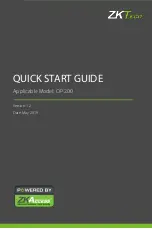
Chapter 3
Connecting the Signals
DAQCard-1200 User Manual
3-18
ni.com
Timing Specifications
Use the handshaking lines STB* and IBF to synchronize input transfers.
Use the handshaking lines OBF* and ACK* to synchronize output
transfers.
The following signals are used in the timing diagrams shown later in this
chapter:
Name
Type
Description
STB*
Input
Strobe Input—A low signal on this handshaking line loads data into the
input latch.
IBF
Output
Input Buffer Full—A high signal on this handshaking line indicates that
data has been loaded into the input latch. This is primarily an input
acknowledge signal.
ACK*
Input
Acknowledge Input—A low signal on this handshaking line indicates
that the data written from the specified port has been accepted. This
signal is primarily a response from the external device that it has
received the data from the DAQCard-1200.
OBF*
Output
Output Buffer Full—A low signal on this handshaking line indicates
that data has been written from the specified port.
INTR
Output
Interrupt Request—This signal becomes high when the 82C55A
requests service during a data transfer. Set the appropriate interrupt
enable signals to generate this signal.
RD*
Internal
Read—This signal is the read signal generated from the parallel port
interface circuitry.
WRT*
Internal
Write—This signal is the write signal generated from the parallel port
interface circuitry.
DATA
Bidirectional
Data Lines at the Specified Port—This signal indicates when the data
on the data lines at a specified port is or should be available.
















































